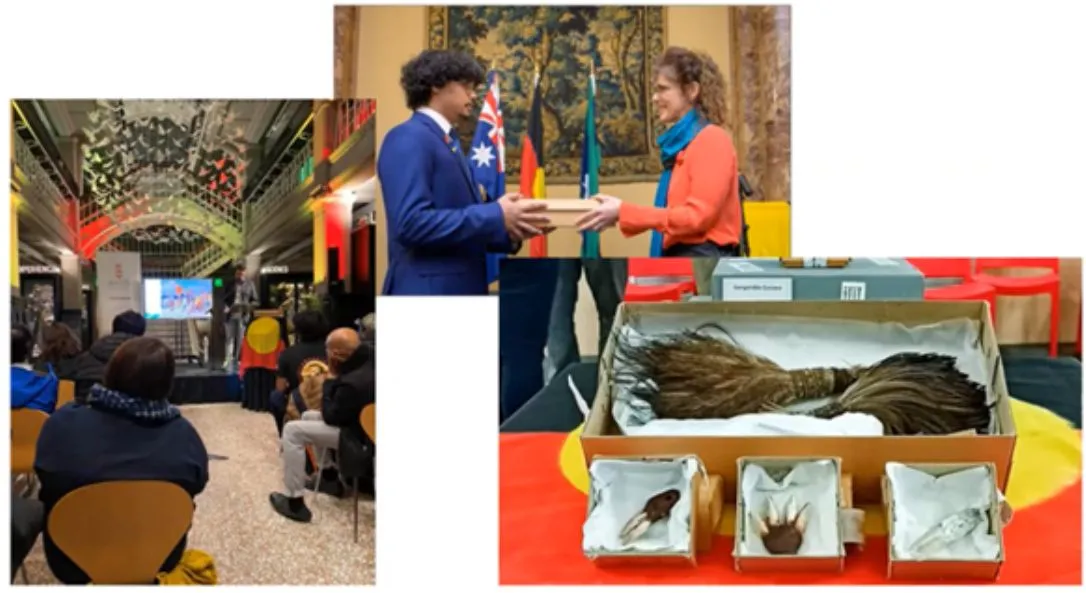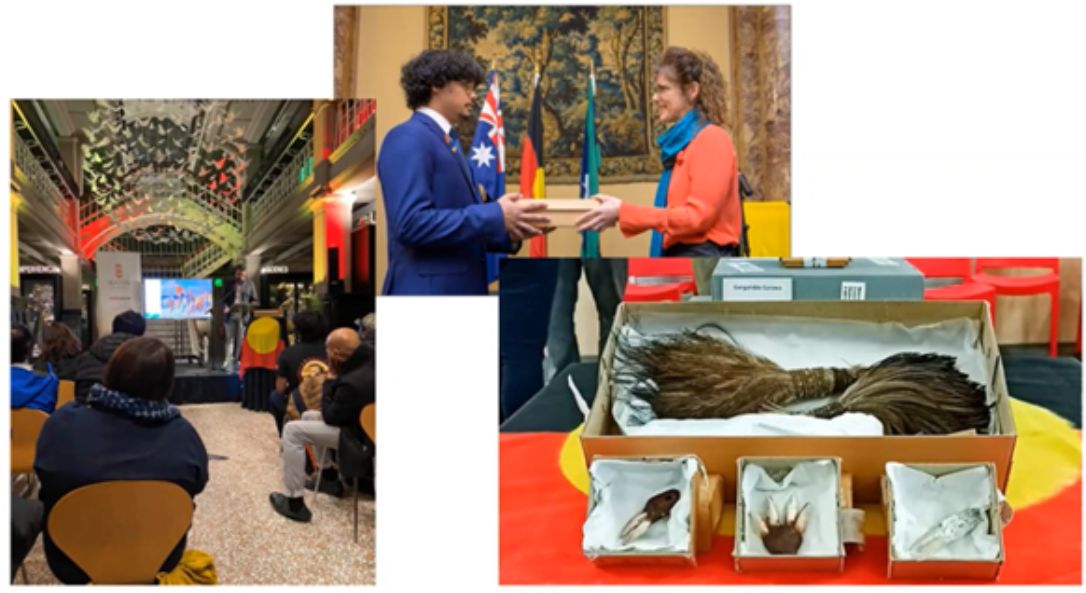Session 2 (Part 1)
Submitted by sharragrow on 07 Sep 2022

Roos van der Helm
Tuesday, Session 2: Repatriation and Decolonisation
Decolonising Museum Conservation Practice: A View From The UK - Irit Narkiss
On the second day of the congress the topics of repatriation and decolonisation were covered by three incredible speakers. The session started off with Irit Narkiss, conservator of objects and access for the Manchester Museum, with her lecture on the decolonisation of museum conservation practice from a UK point of view.
Narkiss begins by telling us about the restitution of sacred objects to four aboriginal groups in Australia, conducted by the Manchester Museum. During this restitution project, the objects were taken care of according to the wishes of the groups; this meant that the objects were treated in ways that did not necessarily reflect common museum practice but were most respectful to the culture of their rightful owners.

Next, Narkiss explains how decolonising museums has been an important topic in the museum world for quite some years and has recently gained even more attention as a result of the Black Lives Matter movement. Narkiss mentions the whispers of fear surrounding restitution; what if museums are left empty after returning everything?
She goes on to explain that most European museums originate from colonialism and the enlightenment philosophy, which excludes other ways of understanding the world. Decolonising our museums does not mean emptying them, but including the perspectives and practices of the subjects of our museums in our work approach. One of the ways this can be implemented is by broadening our western interpretation of doing no harm, and adding spiritual reversibility next to the physical reversibility when conserving objects. In this way the future use by originating groups of the objects is not jeopardized. By intertwining awareness and acknowledgement with conservation practice, preservation will become an action done for people, rather than for safeguarding materials alone. Because, at the core, doesn’t the meaning people give to an object makes the object worthy of being in a museum?
“Just as we revise the use of an adhesive through experience, we revise our ethical stance through experience”
The questions that followed this talk were focused on the collaboration with source communities and restitution and ended in a discussion on the meaning of objects: do they have an inherent meaning or is meaning given to them by the beholder?
Even though this talk lasted for less than fifteen minutes, it has given me a great deal of new insight. While studying cultural heritage at the Reinwardt Academy in Amsterdam, I never came across the term “spiritual reversibility”, even though the topic of inclusion and respect for cultural practices is thoroughly covered in a lot of subjects at the academy. That is why this term in particular has sparked my interest, and I’m looking forward to reading about it and other related topics.
Author
Roos van der Helm
Image Caption
Still image from Irit Narkiss's presentation, Decolonising Museum Conservation Practice: A View From The UK .